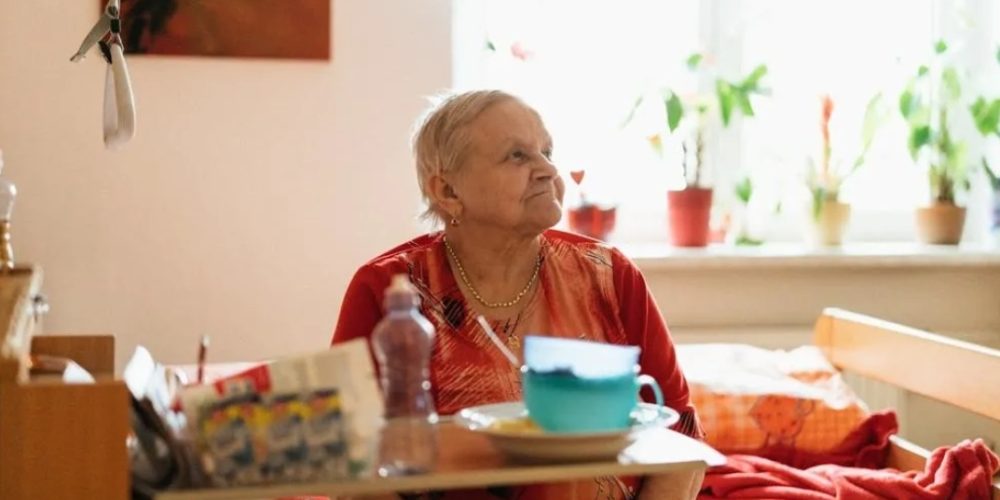Social care experts at the University of Birmingham have launched a series of guides and a training video to improve support for older people, families and care staff when care homes close.
The three guides provide advice to help improve outcomes for care home managers, staff members and care home residents and their families when their care home is going through a closure process.
The guides and video were produced as part of a research project called ‘Achieving Closure’, funded by the National Institute for Health and Care Research (NIHR). The research explored the different experiences of older people, families, care staff, social workers and managers, and the impact that closures can have on the well-being of staff and outcomes for older people.
The closure of a home can negatively impact not only residents, but their families and of course the staff working there. Despite this, there is almost no prior research and very little guidance to help Councils manage closures as best they can, to limit the potential harms that can be caused.
Professor Jon Glasby, University of Birmingham
Jon Glasby, Professor of Health and Social Care at the University of Birmingham, who led the project said: “Care homes support their residents 24 hours a day and 365 days a year, so by definition, these are people’s homes. But many care homes close every year, whether through an emergency like a fire or flood, councils or care providers making strategic choices to develop new service models, the financial position of the home no longer being viable, a private provider might sell up or go bust, or a home is forced to close by authorities following the discovery of poor care.
“The closure of a home can negatively impact not only residents, but their families and of course the staff working there. Despite this, there is almost no prior research and very little guidance to help Councils manage closures as best they can, to limit the potential harms that can be caused.”
Drawing on the experience of older people, families and staff directly involved in care home closures in different case study sites across the country, the policy guide sets out ‘ten top tips’:
• Closures are inherently distressing for everyone involved and should only be a last resort.
• Councils, care home owners and managers should support care staff as best they can, emotionally and in terms of their future employment and financial well-being.
• Time really matters – creating as much space as possible to work at the pace of the individual can make a real difference.
• However much you communicate, it’s never enough – Communication is crucial and should be planned and frequent, keeping people informed is vital.
• People may not be able to influence whether or not the home closes, but any choice and control they can have over what happens next is really valued.
• It’s important to pay attention to the so-called ‘basics’, such as being compassionate and empathetic and sorting any practicalities.
• Some people may need additional support – for example if they have dementia or a sensory impairment, or do not speak English as a first language.
• Families provide really important support; however, we shouldn’t ‘exploit’ families’ during closure, and we need to make sure people don’t lose out if they don’t have family nearby.
• The ‘little things’ matter for residents (how you like your tea, what sort of pudding you like, where you like to put your handbag etc) – paying detailed attention to these can make a big difference.
• Things can get worse, but things can then get better as people settle into a new home.
Local authorities, care providers and their staff also need to understand what they can do to make the process as painless as possible. The project’s outputs provide all of these things, drawing on thorough research.
Caroline Abrahams, Charity Director at Age UK
The guide for older people and their families focuses on managing the stress that can be caused, practical advice from people who have gone through closure and ways to focus on things within their control.
For staff, the guide focuses on the stress that staff can experience when they find out the care home is closing, how care workers can make a difference to residents during the closure, the importance of making time to spend with residents, identifying people who made need extra support, and advice from staff who have come out the other side of closures.
The training video is for anyone involved in closures – but will be particularly helpful for care staff who may not always have access to time or resources for training and development.
Caroline Abrahams, Charity Director at Age UK, chaired the study’s Advisory Board: “It’s been great to be involved with this project because sadly, care homes do sometimes have to close. When this happens, it is tremendously important that older people forced to move elsewhere, and their families, have the information and tools available to help them make a successful transition.
“Local authorities, care providers and their staff also need to understand what they can do to make the process as painless as possible. The project’s outputs provide all of these things, drawing on thorough research. I hope these materials will be widely used as they have the potential to make difficult situations less distressing for care home residents and staff, and commissioners alike.”
Professor Glasby concluded: “When people move into a care home, they assume it’s a home for life. But sadly, a number of care homes close each year, and Councils have not previously had detailed, research-based guidance to support them in undertaking such difficult and important work. We hope these resources help to improve support, make care home closures more manageable and protect people from the worst of what is often a scary and confusing situation.”












